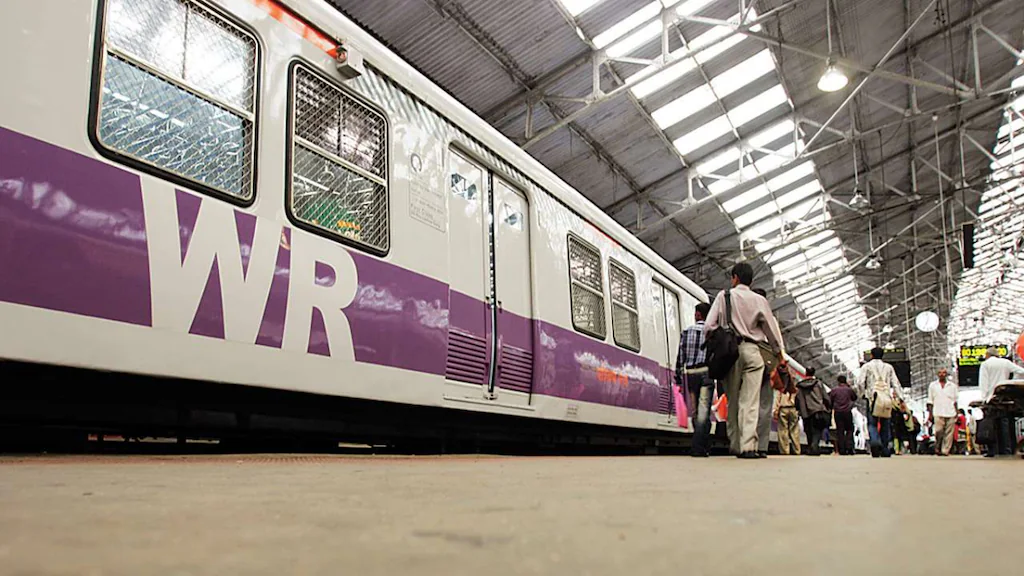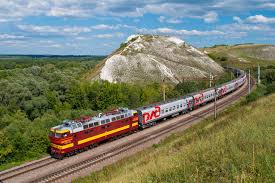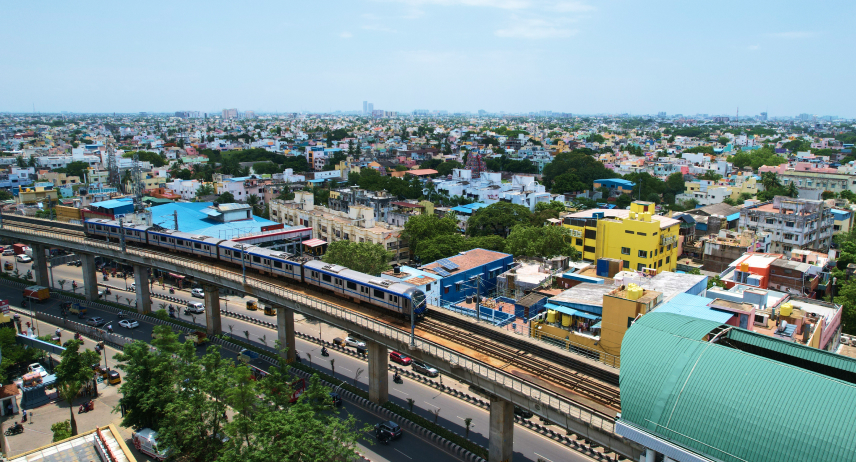The introduction of railways in India in 1853 was envisioned to boost trade and haul freight in a reliable and efficient way. Since then, the Indian rail network has grown to become the fourth largest in the world. With India on its way to becoming the world’s third-largest economy by 2027, the railways continue to play a pivotal role in facilitating the movement of goods across the country. Indian Railways achieved its best-ever freight loading of 1512 MT during FY 2022-23. With an increase in manufacturing and trade levels, India is witnessing a modal shift to rail and can benefit in many ways by accelerating the transition to containerised cargo – a move that will make trade more reliable, efficient, seamless, and sustainable.
Advantages of containerised cargo in rail
The share of rail in the movement of freight in India stands at 27-28%. Coal and other bulk commodities like steel, iron ore and cement account for more than half of this. In comparison, India’s container traffic is around 4% of the total rail freight volume, with the export-import (EXIM) sector accounting for most of this share. The share of containers moved domestically by rail is a mere 1% as compared to countries with comparable rail infrastructure, such as the US, where the share of domestic containers is around 10%.
As India moves towards multimodal logistics and looks to increase the share of rail in freight movement to 45%, it is important to unlock the potential of containerised cargo to boost efficiency and reliability on domestic routes. From a sustainability standpoint, the railways produce only 36 gm of CO2 per ton kilometre, compared to 96 gm of CO2 per ton kilometre produced by long-haul trucks, and 946 gm of CO2 per ton kilometre produced by international aviation. The use of railways for long-distance containerised freight movement is thus not only a secure, low-carbon option but can also reduce traffic and congestion.
There are three big reasons why containerised rail cargo is imperative to unlocking the full potential of India’s robust rail network.
- The first piece in multimodal logistics: Containerising rail cargo leads to standardisation of the goods being transported. This means that freight can be easily exchanged by multimodal networks with the same set of handling equipment. This holds true even for special temperature-controllable containers, or reefers, which can be passed on easily from rail to trucks and vice versa.
- Flexibility and security: By leveraging containers in rail transportation, customers and traders are assured of flexibility and security. Containers can accommodate various types of cargo including automobiles, electronics, foodgrains, pharmaceutical products, textiles, and more. Refrigerated containers (reefers) can transport temperature-sensitive items such as pharmaceutical drugs and perishable food items. Containers provide an added measure of security by protecting the cargo from the external environment. Furthermore, they can be locked and sealed, which means that they are safe and tamper-proof.
- Speed and economies of scale: Rail is a reliable and secure mode of transport. It avoids road congestion and ensures reliable delivery timelines, thereby leading to better inventory management. Moreover, the standardisation of cargo through containers enables swifter handling between different modes of transport. It enables movement of 90 containers in one train which decreases the need to manage 90 trucks, thus enabling economies of scale and reducing loss from thefts or breakages.
The new services, which will run between Bandra Terminus and Gorakhpur, as well as from Udhna to Chhapra, are set to provide greater travel options at special fares.
Trending...
Related posts
Delicious Indian Street Foods You Can Now Make at Home Food
10 Genius Travel Hacks That Will Save You Money in 2025 Blog
7 Mind-Blowing Tech Gadgets You Didn't Know You Needed in 2025 TechWorld
At Least 20 Tourists Killed In Pahalgam, 'Were Shot For Not Being Muslim': What We Know So Far About J&K Terror Attack Travel
A warm message to that kind of person , Who thinks different.. Blog
Chennai Express Shooting Locations: You Must Visit At Least Once Travel
Chennai Diaries: Kshitiz Kumar's Sunday Stroll at Marina Beach Travel
How to apply application for PHD Entrance test of Ranchi University 2025 Guides
Aryan and Ananya love story at ranchi (Podcast by kshitiz ) Episode :2 Blog
Aryan an Ananya love story starts at ranchi (coverd by kshitiz) part 1 Blog
TCS NQT (National Qualifier Test) Honest Review by Kshitiz Kumar TechWorld
Kasol is a hamlet in the Kullu district of the Indian state of Himachal Pradesh Travel
Haryana: A Land Steeped in History and Nature’s Bounty Travel
Punjab: A Land Where Every Heart Beats to the Rhythm of Bhangra Travel
Uttarakhand: Where Nature and Spirituality Embrace You Travel
Shimla: The Enchanting Queen of Hills Awaits You! 🌄 Travel
Laravel mostly used codes during project development Coding
Bersache is a brand that sells sports and casual footwear for men and women. Blog
Jharkhand Election Result 2024: जीत के बाद बोले सीएम हेमंत सोरेन, ‘साथ चलकर सोना झारखंड के निर्माण का लें संकल्प’ Blog
Netarhat, often referred to as the "Queen of Chotanagpur" Blog
Battlegrounds Mobile India 3.5 will be the biggest update of the year; here is why TechWorld
We celebrate diwali in much happier frame of mind 😊 LifeStyle
Business Insider Business News India: Latest Business News Today, Share TechWorld
I am watching whole ranchi from the top in the night in diwali Blog
Diwali 2024 highlights: The Deepotsav celebrations featured around 1,100 people performing a special aarti on the banks of the Saryu river. LifeStyle
Western Railway to run unreserved special trains for Bandra-Gorakhpur and Udhna-Chhapra routes Travel
South Indian food is known for the use of generous coconut in their curries Food
CMRL stands for Chennai Metro Rail Limited, a joint venture between the Government of India and the Government of Tamil Nadu that builds and operates the Chennai Metro Travel
What can you do for your Fit & Good Healthy Life..? Healthy
You might be interested in
-
Punjab: A Land Where Every Heart Beats to the Rhythm of Bhangra
2024-11-26 19:03:39 351 views -
Chennai Express Shooting Locations: You Must Visit At Least Once
2025-01-27 15:17:12 5281 views
Home
- No posts available.
Travel
-
I visited a beautiful place at renukoot
26 June 84 views -
Chennai Express Shooting Locations: You Must Visit At Least Once
27 January 5281 views
Guides
-
How to apply application for PHD Entrance test of Ranchi University 2025
08 January 308 views -
Tourist Places in Ranchi
28 November 1381 views -
The Sacred Shores of Puri
28 November 348 views
Food
-
Delicious Indian Street Foods You Can Now Make at Home
06 September 52 views -
आलू पराठा रेसिपी (घर का बना पंजाबी स्टाइल)
17 November 264 views -
Are you black tea lover.????
17 November 346 views
Coding
-
Laravel mostly used codes during project development
24 November 283 views -
How to write email codes without SMTP
24 November 254 views
Review
- No posts available.
Healthy
-
Essential First Aid Tips for Common Diseases You Should Know
06 September 43 views -
What can you do for your Fit & Good Healthy Life..?
27 October 321 views
LifeStyle
-
Visited Ranchi Johna Fall
20 November 341 views -
We celebrate diwali in much happier frame of mind 😊
17 November 422 views
Blog
-
10 Genius Travel Hacks That Will Save You Money in 2025
06 September 49 views -
My best Playlist for all time
03 September 54 views -
T nagar at chennai
22 August 58 views
TechWorld
-
AI Tools That Will Skyrocket Your Productivity
06 September 43 views -
7 Mind-Blowing Tech Gadgets You Didn't Know You Needed in 2025
06 September 60 views -
The Alternate way to run Laravel site
28 January 184 views
Lyrics
-
Hanuman Chalisa
17 November 326 views
Categories
Home
Show all Blog Posts.
Travel
Travelling is the cure for Health and Soul.
Guides
We always need a guide for our lives.
Food
Food is a big part of our life.
Coding
Coding is the Era of New Tech India.
Review
Review is now going to import things for Anything.
Healthy
Health is wealth , we should never ignore it.
LifeStyle
Our lifestyle decides our health.
Blog
Blog is a great source of Knowledge and skills.
TechWorld
We are here to define all tech things for our
Lyrics
Songs




.jpg)
.jpg)





























Comments
Leave a Reply